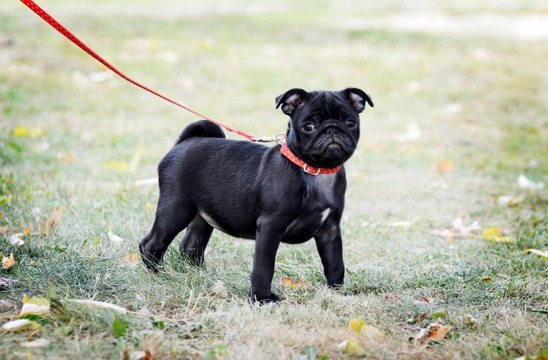
Starting your puppy off on the right foot - How to make sure they don’t pull on the lead
Training your new puppy from the ground up can be a rather daunting prospect for many dog owners, and for the first timer, it can be a good idea to attend training classes to get some guidance from the professionals when you get started, to make sure you get off on the right foot and don’t inadvertently cause problems for yourself with early mistakes that will come back to haunt you further down the line.
However, when your pup has had their first set of vaccinations and is all ready to go out and face the world, one step that you will have to begin on your own is introducing your puppy to walking on the lead, and the earlier that you can get started with this, the better.
All of the large, boisterous dogs that you are apt to see from time to time, straining on their leads and tugging their owners along the pavement started off somewhere themselves-and in order to prevent yourself ending up with a dog that pulls on the lead and is a general pain when they get older, nipping potential problems in the bud is really important.
In this article, we will look at how to get your puppy started with on-the-lead walks, and how to prevent your dog from developing a pulling problem later on. Read on to learn more.
Introducing your puppy to the lead
It is a good idea to start your puppy off wearing a collar when you first bring them home, as it is of course necessary to display an identification tag and also, stagger the changes that will soon come for them, including walking on the lead.
When it comes to choosing the lead itself, consider first if you wish to use a collar or a harness with your dog, and get a lead that is an appropriate length and thickness to suit your pup, steering clear from extendable leads and slip or choke collars at this stage. Longer leads that give your pup more leeway to move around are wisest in the first instance.
Show your pup the lead regularly and get them used to sniffing it, attach it to their collar now and then and just let them sit wearing it. Discourage chewing, rolling around or getting tangled up, and ask your puppy to sit when you get the lead out for them.
Getting started
Before you take your puppy out in public on the lead (which you should start doing fairly early on) make sure that they are used to the lead and the taking up of pressure on the lead without pulling or fighting against it. If your pup struggles, pulls or tries to turn it into a game, simply stand still and relaxed until they give up, then take up the pressure again and encourage them to sit.
Then, call them to you and walk at the same time, so that they get to grips with the basics of matching your pace on the lead for a few steps at a time, remaining at the sort of distance that you wish them to keep, and walking on the side of you that you wish them to walk on. Use plenty of treats for rewards and encouragement, and to keep your dog interested.
Beginning to walk in a line with them on the lead next to you is the next step, and when there is not so much stimulus going on around them, most pups will take to this happily and without too much hassle, with a little repetition.
Preventing pulling
Whether your pup shows signs of pulling while you are still working with them in the garden or not, when you actually get out onto the pavement and your pup is faced with all of the smells, sights and stimulus that comes with it, you are likely to face the beginnings of pulling due to the desire to get out there and see and sniff everything that is going on!
This is a very formative time when it comes to training your pup, and they need to be exposed to lots of different things and begin to learn about the world around them-but this is also the key point at which you need to nip pulling in the bud before it begins, while your pup is still small enough and controllable enough to learn the proper etiquette.
Teach your pup the “heel” command to call them back when they pull, with one, gentle check on the lead to accompany it-not a tug or a yank, simply a reinforcement of your command.
Never use the lead to pull your pup back or to physically direct them; this in itself can start the pulling cycle.
When your pup does pull, give them the “heel” command and check the lead, and then stand still and relaxed, effectively ignoring your dog and not moving forwards until your dog stops pulling. When they do stop, you can set off again-but during the first few weeks of on-lead training, it is reasonable to expect that your pup will try to pull repeatedly every time you set off for another step!
This means that the stopping, waiting and continuing can take a lot of time and can be frustrating, when it is all too tempting to simply let your pup pull just to make some progress, or to pull them back in annoyance-but keeping calm and remembering the rules at this early stage will actually set your pup up for a future of hassle-free on the lead walking, which will pay dividends later on, so keep at it!



